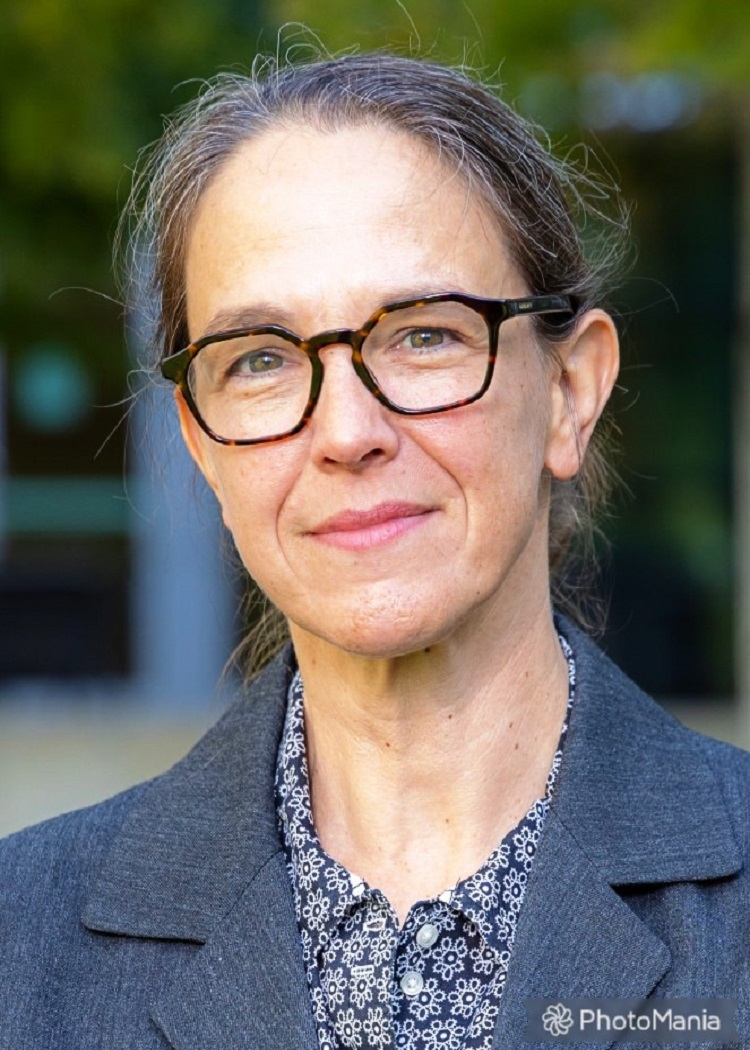Jenifer Monks, PhD
Assistant Professor
Division of Reproductive Sciences
Department of Obstetrics and Gynecology
Education
PhD (1999) in Cell and Developmental Biology, University of Colorado Denver, Denver, CO
Contact
Research Complex 2
12700 East 19th Avenue
Room 3104, MS 8613
Aurora, CO 80045
Phone: (303) 724-3505
Fax: (303) 724-3512
Research Interests
Lactational insufficiency is an ongoing problem in women, with poorly understood causes. The literature defines four crucial windows that may be disrupted.
- Mammary development during late pregnancy must proceed normally for adequate alveolar cells to produce milk. Lactational difficulties of women with premature infants may result from inadequate mammary development.
- Hormonal signals at parturition that initiate milk synthesis and secretion may be disrupted. An example of this is delayed milk secretion in women with caesarian delivery.
- Feedback regulation of milk supply which matches supply and demand in the mother-infant dyad may be disrupted, resulting in either an overabundance or undersupply for the neonate.
- Regression of the gland initiated by weaning must proceed normally for normal milk production in subsequent reproductive cycles.
Recent Publications
- Martin Carli JF, Dzieciatkowska M, Hernandez TL, Monks J, McManaman JL. Comparative proteomic analysis of human milk fat globules and paired membranes and mouse milk fat globules identifies core cellular systems contributing to mammary lipid trafficking and secretion. Front Mol Biosci. 2023 Dec 18;10:1259047. PMID: 38169886.
- Monks J, Mather IH. Mammary Gland, Milk Biosynthesis and Secretion: Secretion of Milk Constituents. In: McSweeney PL, McNamara JP, editors. Mammary Gland, Milk Biosynthesis and Secretion: Secretion of Milk Constituents Encyclopedia of Dairy Sciences [Internet] 3ed. Academic Press: Elsevier; 2022. 206–213p.
- Monks J, Orlicky DJ, Libby AE, Dzieciatkowska M, Ladinsky MS, McManaman J. Perilipin-2 promotes lipid droplet-plasma membrane interactions that facilitate apocrine lipid secretion in secretory epithelial cells of the mouse mammary gland. Frontiers in Cell and Developmental Biology- Membrane Traffic. 2022.10:958566. doi: 10.3389/fcell.2022.958566. PMID: 36158190; PubMed Central PMCID: PMC9500548.
- Martin Carli JF, Trahan GD, Jones KL, Hirsch N, Rolloff KP, Dunn EZ, Friedman JE, Barbour LA, Hernandez TL, MacLean PS, Monks J, McManaman JL, Rudolph MC. Single Cell RNA Sequencing of Human Milk-Derived Cells Reveals Sub-Populations of Mammary Epithelial Cells with Molecular Signatures of Progenitor and Mature States: a Novel, Non-invasive Framework for Investigating Human Lactation Physiology. J Mammary Gland Biol Neoplasia. 2020 Dec;25(4):367-387. doi: 10.1007/s10911-020-09466-z. PubMed PMID: 33216249; PubMed Central PMCID: PMC8016415.
- Monks J, Ladinsky MS, McManaman JL. Organellar Contacts of Milk Lipid Droplets. Contact (Thousand Oaks). 2020 Jan-Dec;3. doi: 10.1177/2515256419897226. Epub 2020 Jan 23. PubMed PMID: 32232194; PubMed Central PMCID: PMC7105144.
- Monks J, Orlicky DJ, Stefanski AL, Libby AE, Bales ES, Rudolph MC, Johnson GC, Sherk VD, Jackman MR, Williamson K, Carlson NE, MacLean PS, McManaman JL. Maternal obesity during lactation may protect offspring from high fat diet-induced metabolic dysfunction. Nutr Diabetes. 2018 Apr 25;8(1):18. doi: 10.1038/s41387-018-0027-z. PubMed PMID: 29695710; PubMed Central PMCID: PMC5916951.
- Monks J, Dzieciatkowska M, Bales ES, Orlicky DJ, Wright RM, McManaman JL. Xanthine oxidoreductase mediates membrane docking of milk-fat droplets but is not essential for apocrine lipid secretion. J Physiol. 2016 Oct 15;594(20):5899-5921. doi: 10.1113/JP272390. Epub 2016 Aug 3. PubMed PMID: 27357166; PubMed Central PMCID: PMC5063925.
- Neville MC, Webb P, Ramanathan P, Mannino MP, Pecorini C, Monks J, Anderson SM, MacLean P. The insulin receptor plays an important role in secretory differentiation in the mammary gland. Am J Physiol Endocrinol Metab. 2013 Nov 1;305(9):E1103-14. doi: 10.1152/ajpendo.00337.2013. Epub 2013 Aug 27. PubMed PMID: 23982156; PubMed Central PMCID: PMC3840206.
- Rudolph MC, Monks J, Burns V, Phistry M, Marians R, Foote MR, Bauman DE, Anderson SM, Neville MC. Sterol regulatory element binding protein and dietary lipid regulation of fatty acid synthesis in the mammary epithelium. Am J Physiol Endocrinol Metab. 2010 Dec;299(6):E918-27. doi: 10.1152/ajpendo.00376.2010. Epub 2010 Aug 24. PubMed PMID: 20739508; PubMed Central PMCID: PMC3006251.
- O'Brien J, Lyons T, Monks J, Lucia MS, Wilson RS, Hines L, Man YG, Borges V, Schedin P. Alternatively activated macrophages and collagen remodeling characterize the postpartum involuting mammary gland across species. Am J Pathol. 2010 Mar;176(3):1241-55. doi: 10.2353/ajpath.2010.090735. Epub 2010 Jan 28. PubMed PMID: 20110414; PubMed Central PMCID: PMC2832146.
- Monks J, Smith-Steinhart C, Kruk ER, Fadok VA, Henson PM. Epithelial cells remove apoptotic epithelial cells during post-lactation involution of the mouse mammary gland. Biol Reprod. 2008 Apr;78(4):586-94. doi: 10.1095/biolreprod.107.065045. Epub 2007 Dec 5. PubMed PMID: 18057312.
- Monks J. TGFbeta as a potential mediator of progesterone action in the mammary gland of pregnancy. J Mammary Gland Biol Neoplasia. 2007 Dec;12(4):249-57. doi: 10.1007/s10911-007- 9056-2. Epub 2007 Nov 20. Review. PubMed PMID: 18027075.
- Monks J, Rosner D, Geske FJ, Lehman L, Hanson L, Neville MC, Fadok VA. Epithelial cells as phagocytes: apoptotic epithelial cells are engulfed by mammary alveolar epithelial cells and repress inflammatory mediator release. Cell Death Differ. 2005 Feb;12(2):107-14. doi: 10.1038/sj.cdd.4401517. PubMed PMID: 15647754.
- Frank DN, Bales ES, Monks J, Jackman MJ, MacLean PS, Ir D, Robertson CE, Orlicky DJ, McManaman JL. Perilipin-2 Modulates Lipid Absorption and Microbiome Responses in the Mouse Intestine. PLoS One. 2015;10(7):e0131944. doi: 10.1371/journal.pone.0131944. eCollection 2015. PubMed PMID: 26147095; PubMed Central PMCID: PMC4493139.
- Monks J, Neville MC. Albumin transcytosis across the epithelium of the lactating mouse mammary gland. J Physiol. 2004 Oct 1;560(Pt 1):267-80. doi: 10.1113/jphysiol.2004.068403. Epub 2004 Aug 5. PubMed PMID: 15297572; PubMed Central PMCID: PMC1665199.
- Monks J, Geske FJ, Lehman L, Fadok VA. Do inflammatory cells participate in mammary gland involution?. J Mammary Gland Biol Neoplasia. 2002 Apr;7(2):163-76. doi: 10.1023/a:1020351919634. Review. PubMed PMID: 12463737.
- Monks J, Huey PU, Hanson L, Eckel RH, Neville MC, Gavigan S. A lipoprotein-containing particle is transferred from the serum across the mammary epithelium into the milk of lactating mice. J Lipid Res. 2001 May;42(5):686-96. PubMed PMID: 11352975.
- Monks J, Neville MCVesicular transport of soluble substances into mouse milk. Adv Exp Med Biol. 2001;501:257-63. doi: 10.1007/978-1-4615-1371-1_32. Review. PubMed PMID: 11787689.
Complete List of Published Work in MyBibliography: https://www.ncbi.nlm.nih.gov/myncbi/14waMqcTkbaQ7/bibliography/public/
